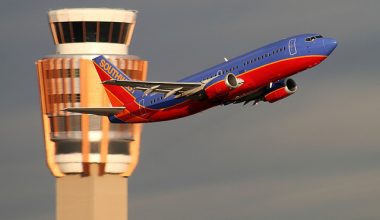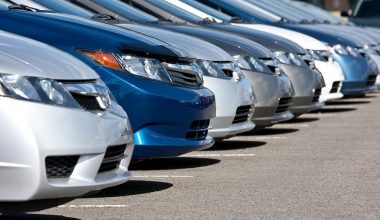Douglas C-54 Skymaster is an icon of aviation that has been a part of the fleet carrying presidents involved in the Berlin airlift and Korean War. It is a significant aircraft of Douglas Aircraft Company that was designed in the early 1940s. The four-engine aircraft was made for passenger transport before the Army Air Corps delivered the first examples as C-54s. Douglas C-54 Skymaster is the military version of the civilian airliner Douglas DC-4 which was built upon the commercial success of DC-3 in the market to be used for airline services. However, since the aircraft could transfer more passengers in a voluminous cabin and World War II during the rolling off of the first aircraft’s production line in 1942, the aircraft became very useful for US Air Army Force was known as C-54 Skymaster. Until 1971, the Douglas variant operated for troop and cargo transportation. Having the capacity to accommodate up to 60 people, C-54 Skymaster was very renowned with air transport companies after the end of World War and was used by several airlines such as Qantas, Trans-Atlantic Airlines (TAA), Australian National Airways (ANA), and later ANSETT-ANA.

More than 300 C-54s and R5Ds created the significant history of US contribution to the Berlin Airlift in 1948. It is also the aircraft that can be dated back to Korean War, where it served as the main airlift. Produced from 1942 to 1947, Skymasters have carried presidents, cargo, and military staff, and several C-54 variants have been deployed for air-sea rescue, scientific research, missile tracking and recovery, and other non-combat roles. A total of 1164 Skymasters operated their services with US Army Air Forces, 515 of which were built in Santa Monica, California, and 655 were produced at Orchard Place/Douglas Field. During the course of World War II, Douglas Aircraft Company built hundreds of C-54s in various configurations such as passenger, cargo, medical transportation, etc.
Douglas C-54 Skymaster design and variants
The emerging entry of the US into World War II made the provision to fulfill the military requirements through airliners such as Douglas DC-4, which were designated as C-54 Skymaster. The first civil production type added four auxiliary fuel tanks in the main cabin so the plane could only accommodate up to 26 passengers.
C-54A, the first military version, has a strong floor, and its cargo door was incorporated with a hoist and winch. It also had an increased capacity to store fuel in the aircraft and was first delivered in February 1943. C-54A was a heavy-lift aircraft type that could load up to fourteen thousand pounds at a time onboard.
One year later, i.e., in March 1944, Douglas Company introduced the next version of C-54 which was C-54B. It differed from C-54A in terms of removal of its two-cabin tanks to allow the fitting of 49 seats (16 stretchers). The integral fuel tanks in the outer wings had given access to an increased fuel capacity in the wings.
C-54C is the hybrid version used for presidential transport, which was heavily modified in line.
C-54D is the common variant of the Douglas C-54 Skymaster introduced in August 1944. It was derived from the C-54B version and was powered by R-200-11 engines.
C-54E allowed carrying up to 44 passengers and freights given the movement of two cabin fuel tanks to the wing. Provision for the fast passenger to freight conversion was the enhanced feature of C-54E. Douglas Company made a total of 125 such aircraft.
Douglas C-54G variant installed three-bladed constant-speed fully-feathering propellers and had four engines of Pratt and Whitney R-200-9 Twin Wasp 14-Cylinder air-cooled radial piston. It was similar to C-54E, and a total of 400 such versions were ordered, but only 162 were finished, and the rest were canceled.
Douglas C-54 Skymaster as the iconic aircraft
Douglas C-54 Skymaster marked its entry in 1942 as the aircraft with intercontinental flight capabilities to operate in the vast distance of the Pacific-Asian theater of operations. The military variant of DC-4 four-engine commercial transport has the maximum loading capacity of 49 passengers or 28000 pounds of cargo and served the US Army Air Force from 1942 to 1947.
The C-54 aircraft, serial no. 42-107451 is not an ordinary aircraft. Designated as VC-54C, this Douglas aircraft was used for presidential transport featuring heavy modifications including fuselage based on C-54A incorporating four-cabin fuel tanks, wings that had built-in tanks derived from C-54B, which offered greater fuel capacity, unpressurized cabin, battery-powered elevator, and so on. Also known as ‘Sacred Cow,’ VC-54C Skymaster is the first aircraft purpose-built to carry President Franklin D. Roosevelt during his administration. It had a total seating capacity of 15 passengers + 7crews and could travel at the maximum speed of 300mph.
The aircraft has a private lavatory, executive conference room, rectangular bulletproof window, and electric refrigeration. The presidential aircraft had an elevator behind the passenger cabin for raising and lowering the wheelchair-bound president in and out of the plane. It left the presidential service, and USAF performed other transport duties until it was finally grounded in October 1961. The aircraft was placed in the museum to restore its former glory. Ten years and over 34000 hours of hard monumental work finally paid off after it was placed on display depicting the same appearance as in Feb 1945, when it carried President Roosevelt to the Yalta Conference.
Popularity of C-54
Roosevelt’s successor Harry S. Truman established the US Air Force as an independent service by signing onboard the aircraft on the National Security Act of 1947. According to the National Museum of Air Force, the president made Sacred Cow the birthplace of the US Air Force while it served Truman during the first 27 months of his administration.
The exact aircraft C-54 rushed the documentary film of the Japanese Empire, signing the written document surrendering back to the US for processing and distribution to end the hostilities.
The contribution of Douglas C-54 Skymaster during Berlin Airlift
The contribution of the Douglas C-54 Skymaster in the supply of coal and various essentials can’t be forgotten. When the Soviet Union decided to test the will of three Allied Nations by preventing any surface transportation into and out of Berlin, C-54s in the USAF fleet were pressed into service to supply the isolated city. The Berlin Airlift was a sustained effort and an answer to the USSR’s blockade where air powers were used to fly over the roadblocks carrying tons of essential supplies for the population of Berlin in 1948. In the beginning, 105 C-47 aircraft were employed in the airlift, which could take three and one-half tons of cargo. The arrival of Skymasters leveled up the average daily delivery rate, and thirty-eight C-54 underwent modification to become airborne coal carriers while removing fuel tanks and amenities. When Soviet forces blocked rail, road, and water access to keep control over Berlin, C-54s were active in many missions to airlift food and coal into Berlin. Every 45 seconds, one aircraft landed from Allied airbases to Tempelhof airport.
The versatility and range of C-54 not only became critical to the success of Berline Airlift, but it also continued to serve during the Korean War, where aeromedical evacuation, including the swift transport of battle casualties to medical centers by C-54s, resulted in low death tolls from wounded soldiers. Military Air Transport Service (MATS) fleet of C-54s, C-47s, C-119s, and C-124s carried supplies and evacuated the American civilians and few American military advisors who were in the now-embattled nation. The airlift began with Douglas C-54 Skymaster during the Korean War.
C-54s transformed into litter-carrying planes as a medevac aircraft and helped to return 66000 wounded people to the United States.
Retirement of Douglas C-54 Skymaster/DC-4
As an airliner, C-54 Skymaster had a successful career in USAF service until the 1960s, when the last of these workhorses were retired due to the induction of larger, faster jet aircraft coming out of age. Maintenance of C-54s became a serious problem later as there were no means, supplies, and aircraft parts to support them. There was a shortage of maintenance facilities, and only a few mechanics had the actual experience to handle these big birds. As Skymaster had been designed to be commonly used long-range trans-ocean transport, the aircraft were called upon to make a large number of short flights with frequent take-offs under maximum power strained engines. The repeated landings, heavy load transportation, stressed tires, and brakes resulting from airlift placed a tremendous burden on aircraft that later manifested as fragile nose gear, loosened bolts, and rivets, fractured metal pieces, etc.
The war ended; USAF and US Navy disposed of the aircraft, many of which were transformed for civilian fire-fighting and air tanker purposes. In later years, Douglas manufactured 2100-hp Pratt and Whitney R-2800-34 radial engine powered XC-112 aircraft, which was the pressurized variant of C-54E. The added features consisted of a long fuselage, large rectangular windows, and more powerful engines. It soon commenced both commercial and military operations as DC-6 and C-118 Liftmaster, respectively.
Despite the replacement of DC-4 in favor of more powerful jets, many Skymasters continued operations as low-cost transport, cargo haulers, and firefighters around the world until the late 1990s.
Conclusion
Douglas C-54 Skymaster was the vehicle for Franklin D. Roosevelt, Douglas MacArthur, and Winston Churchill during the war outbreak. Royal Air Force, American delegated to the Casablanca Conference, Armee de l’Air and 12 other different armed forces used the service of Skymaster.
Some Douglas C-54 Skymasters are now moved to the museum to recreate the historical days of war period air travel. This icon of Douglas is the president carrier, hero of the Berlin Airlift, and evokes the unique presentation of how aircraft performance and capacity were like during World War II.






